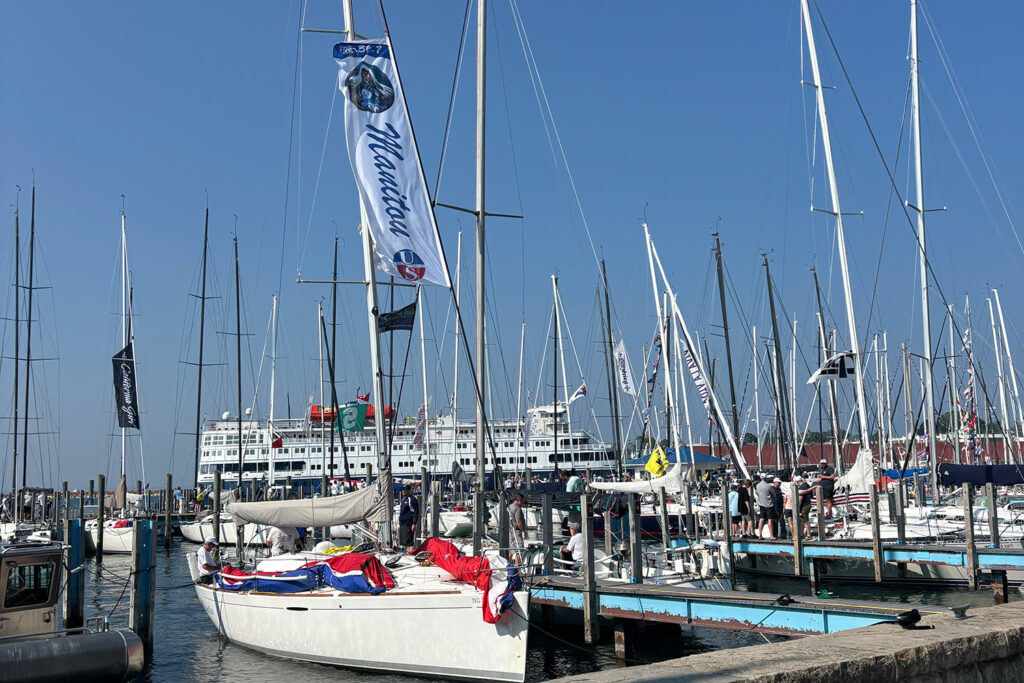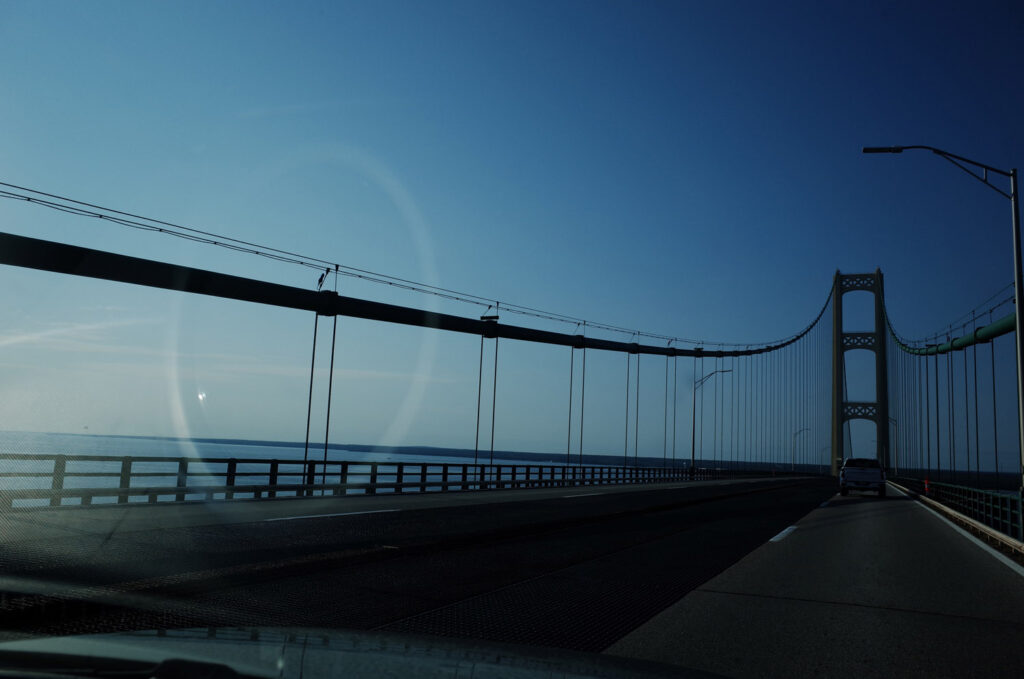Races come and go every year, but it’s the storms that sailors never forget.
Reflecting on his decades of racing, Bayview Mackinac Race Chair and Fast Tango boat owner Tim Prophit recounted the events of the 2011 Chicago to Mackinac Race in which a freak storm system, with two low-pressure centers, one over the Upper Peninsula and one over North Dakota, got into a fight and wreaked havoc on Lake Michigan.
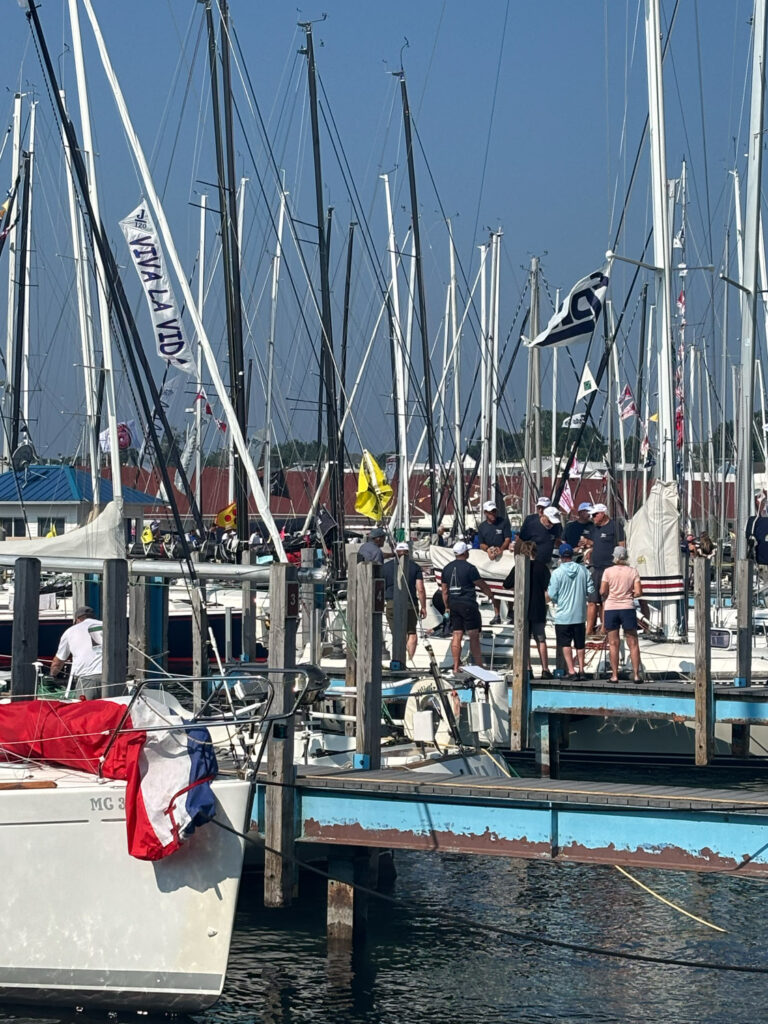
One boat, WingNuts, tragically capsized, resulting in multiple deaths. On his own boat, Prophit recalled wind speeds hitting up to 105 knots (120 mph) over a 12-minute stretch. At one point, the boat was knocked down so far that the mast was in the water, with the hull nearly parallel to the lake’s surface.
Two of the younger crew members, just 14 and 17 years old, were sent below deck, far from the mast, for fear that a sudden break or jolt could cause decapitation.
When asked why someone would race again after something like that, Prophit smiled and said he figured it was a once-in-a-lifetime experience. Remarking that I would have curled up into a ball and accepted defeat, he disagreed.
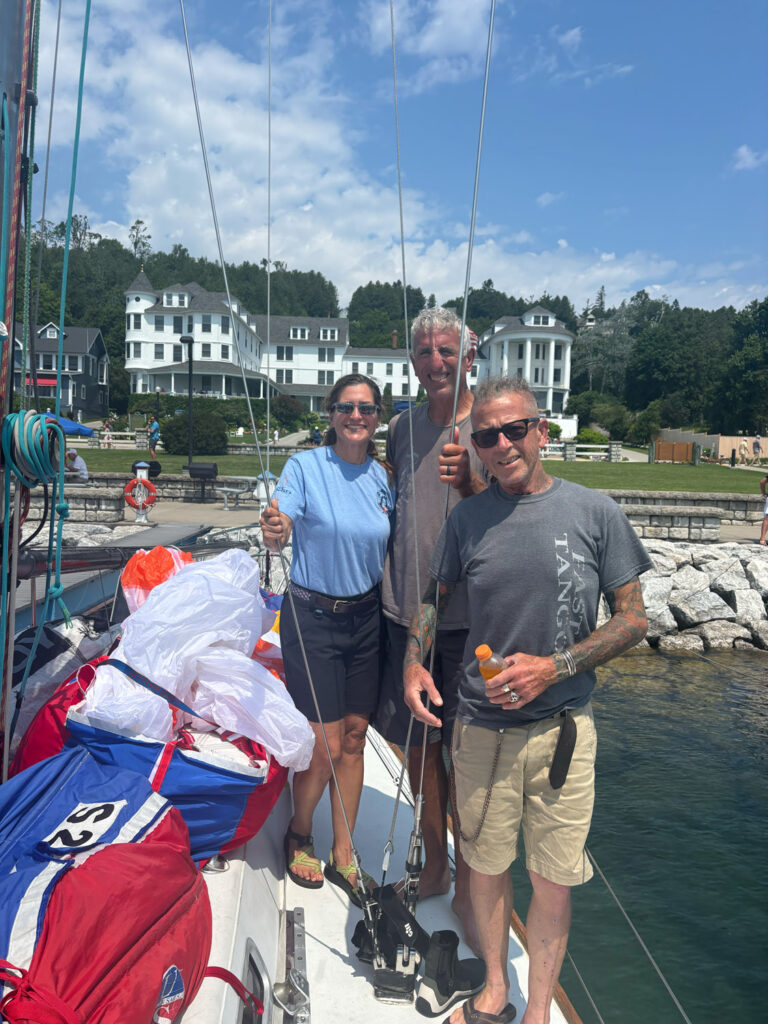
“You would reach within yourself, and you would do whatever,” Prophit said. “You would rely on the fact that you have more experienced people on the boat, and you would do what they would tell you to do. You would trust them.”
Luckily, this year, Lake Huron didn’t see the same kind of action. In fact, it was described by many as “a drag race,” but despite names like Angry Cupcake, Good Lookin,’ and Wildcat in the running, RuPaul was nowhere near this one.
Following the racetracker, it’s not hard to see why sailors described it as a straight-line speed contest, rather than a Great Lakes chess match. Most boats traveled mostly straight through Lake Huron, reoriented northwest once they hit Cove Island, and sailed to Mackinac Island in another straight line.
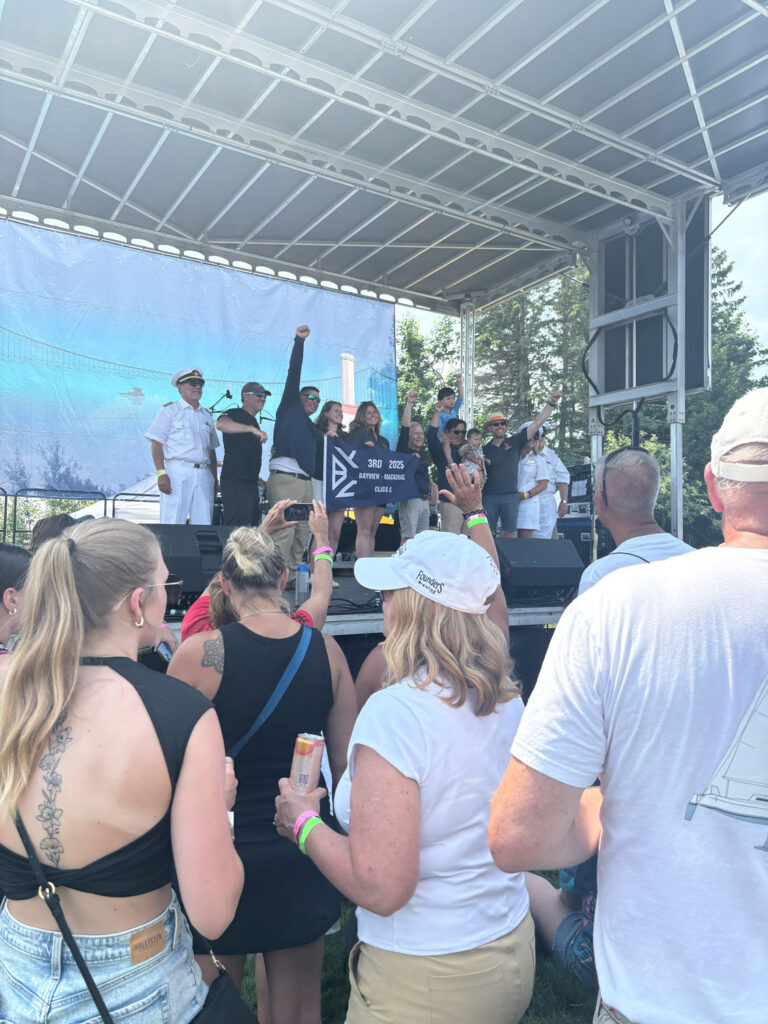
The top three overall winners on the Cove Island Course—Heartbreaker, Mockingbird, and Natalie J—were all from the GL52 fleet. Most sailors know they don’t have a chance at winning overall, but sailors can compete for first overall in their respective division and class, which are determined by their boat’s speed, size, and desired course.
For the Division I Cove Island racing course, there are classes A-G. For the Division II Shore Island racing course, there are classes H-J. The Division III Shore Course is the cruising course for classes K-M, and Division IV is the Cove Island course for Multihull boats.
There are awards for first, second, and third in each class, but some categories are more competitive than others.
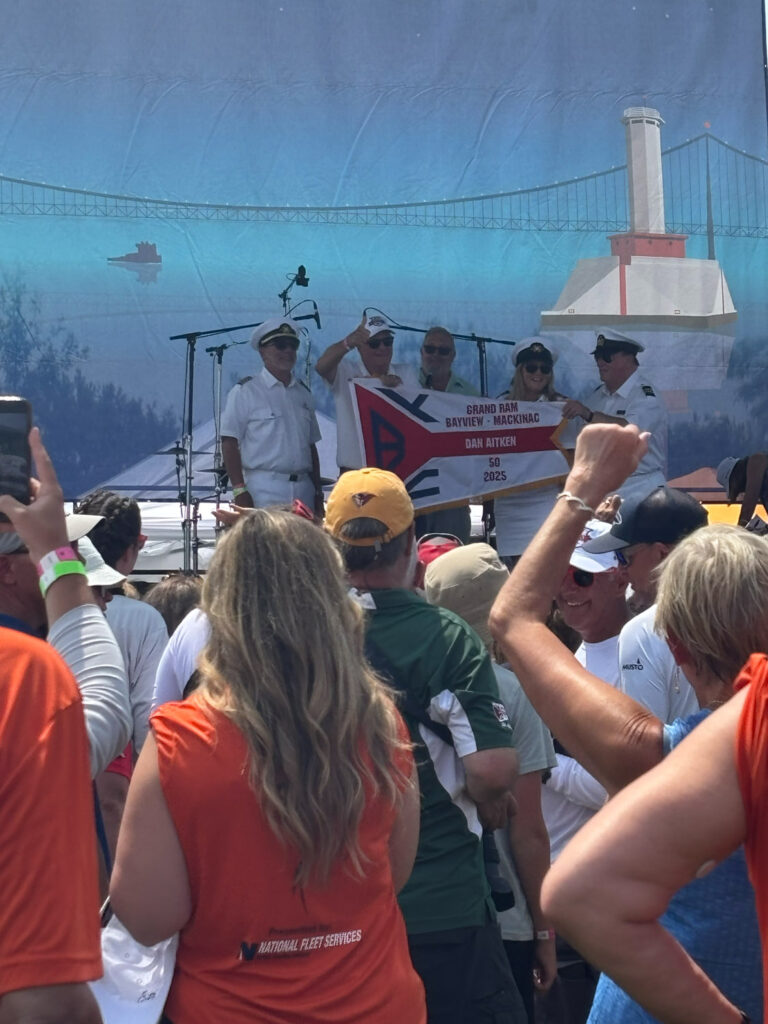
Because of the aforementioned thunderstorms, men overboard, seasickness, and living quarters that make New York City apartments look spacious, yacht racing starts to look like a sport for the sadistic, or, at least, the very mentally ill.
Suzanne Scoville from the crew of the Manitou described the race as an odyssey: Trying and challenging, but worth it when completed. This year, Manitou came in 52nd in the overall division, but only after breaking its spinnaker pole and tearing its best downwind sail during a storm.
The crew pressed on by sawing off the broken part and sailing the rest of the way with a shortened spinnaker. These modern-day pirates may not carry swords, but they never go without a knife. Most boats keep a large knife aboard for times like those, and most, if not all, sailors carry a small one on them at all times, just in case they have to cut themselves or someone else free in a hurry.
In addition to the quick-thinking, composure, resilience, and bravery needed to survive in situations like these, sailors have to learn tedious sail trimming, strategic boat prep, navigation, precise angles, fluid dynamics, and meteorology to finish a race like this.
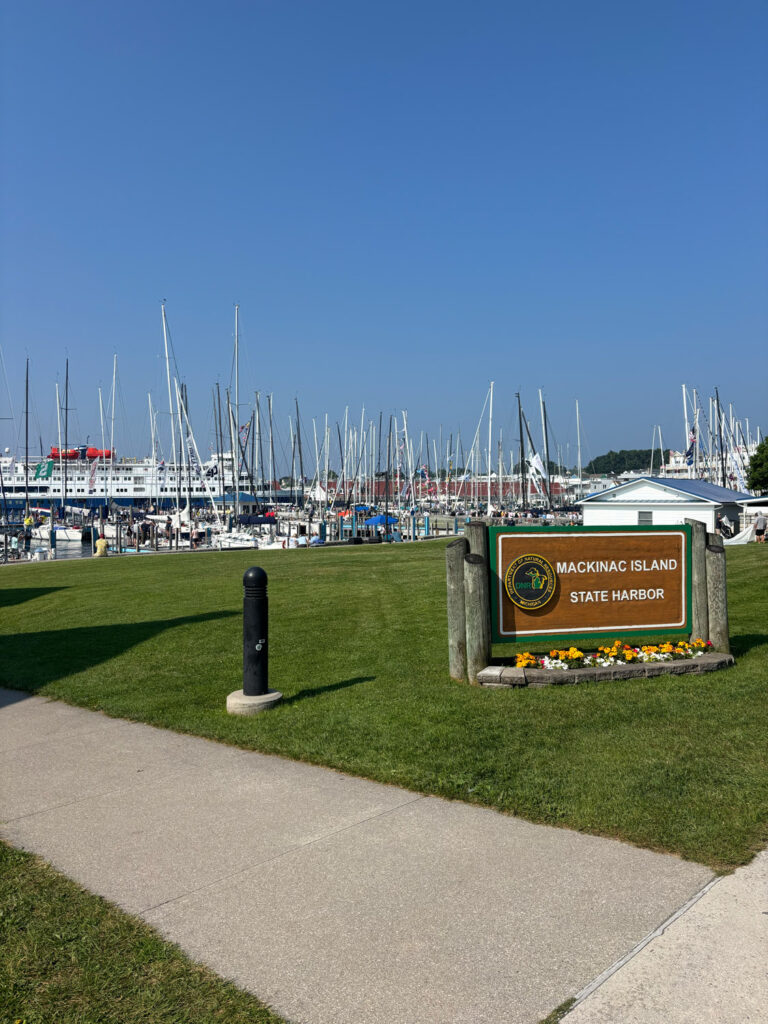
And despite technical failures and design-induced disadvantages, many sailors love their boat because it’s theirs, not because it’s a guaranteed first place every time, or maybe even any time.
Every year, some boats unable to finish the race. This year, Talisman had to drop the race, but while motoring south in Lake Huron, it picked up a man who had been in the water for a few hours. Trident lost a man overboard, Pete Pryce, after they suffered a knockdown during a squall. Amante 2 picked him up and took him to the island.
Gentoo and Pommes Frites also made efforts, starting their motors and dropping their sails, in response to the mayday call. On the race tracker, other boats can be seen sailing straight through the area while Amante 2 and Solution sailed in swirling lines to pick up the floating sailor.
Sailors may request redress if an incident occurs that unfairly affects their race time. Where sailors can get back their race time, they can’t always get back their sportsmanship
Keith Grzelak from Solution spoke highly of Pryce, but for the sailors who neglected to stop the race and join the search, he had a reminder that, “The best sailors don’t care about winning.”
The race tracker tells the stories of the winners and the finish line, but it also tells the stories of the journey each boat took to get there. For many, the camaraderie and spirit of the sailing community are what truly draw them into the sport. And, according to Grzelak, it really ought to be the driving ethos.
That spirit plays out in the makeup of crews and the long histories behind some of the boats. Depending on personal schedules and skill sets, crews often vary from year to year. One person can do a decade of races jumping between a few different boats.
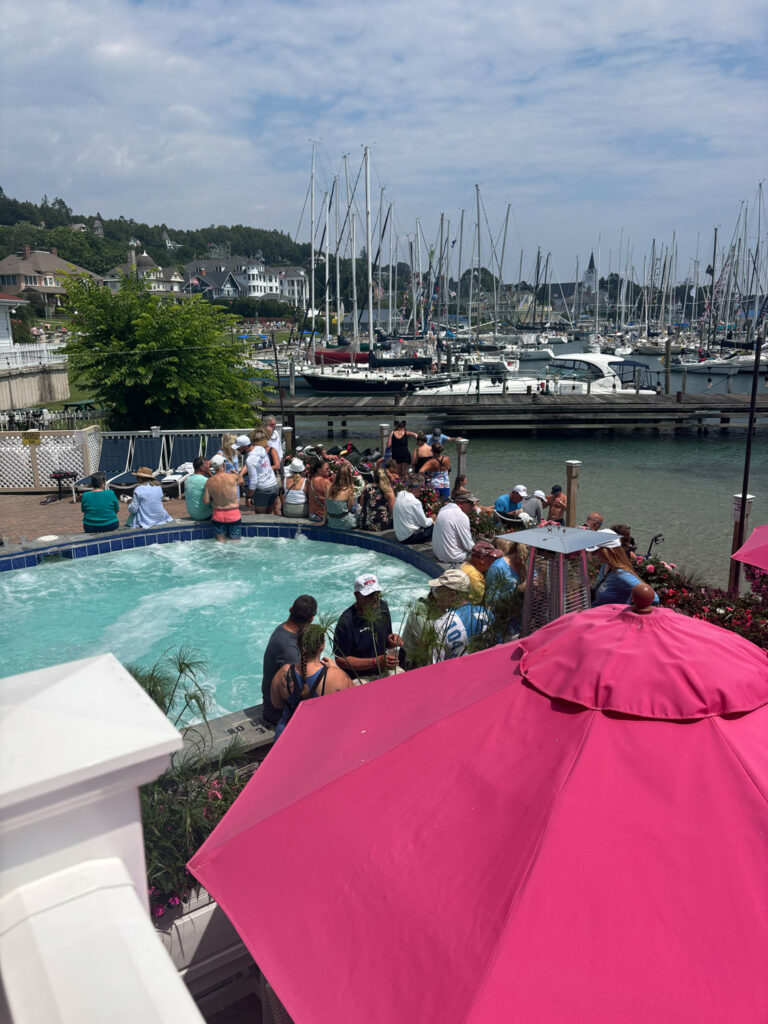
Wind Toy is the only documented boat to complete 50 Mac races under the same family name. Rob Bunn’s grandparents bought the yacht in 1969. This year, Wind Toy took first in class and second overall on the Division II Shore Course. With three generations of Bunns onboard to claim the victory, Laurie Bunn emphasized the joy of the sport.
“I like teamwork. I like the environment, the outdoors, the water,” Laurie said. “I like sailing with my family. It’s hard because everybody’s busy, but when we get on the boat, we can just all catch up.”
“I guess I just like the big picture of it, the way it’s such an effort,” Laurie added. “Sometimes things go wrong, sometimes things go flawlessly, but either way, if it’s bad, you just have a story to tell about it that makes it memorable.”
This sense of community, alongside some classic Midwestern friendliness, seems to temper the competitiveness of the sport, at least once everyone is on the Island. Beth Kurda, a member of the shore crew for Fast Tango, said a lot of that comes from being able to leave it all out on the water.
“The person you beat today can beat you next week,” Kurda said.
Erasing one’s memory upon reaching the Island is a key part of both the accomplishment and the community aspect of sailing. Many sailors admitted to drinking more beer than water during the race, and the Pink Pony Club and Horn’s bar were packed with sailors all weekend, drinking heavily enough to want to hit the waves all over again next week and next year.
And every sailor at the bar is the skipper of his boat and the winner of the race. Some of them take off their wedding rings because the “water makes their fingers swell,” and even newly married individuals will offer young women a tour of their boats and out to breakfast the next day. Blame it on the intoxicating island freedom.
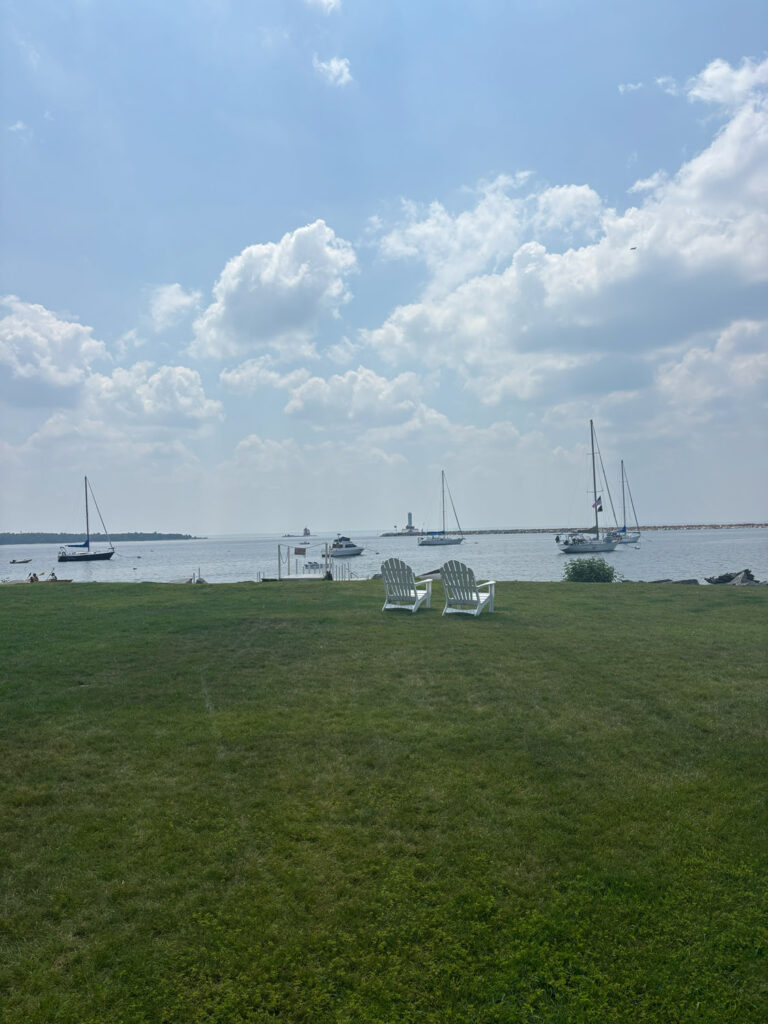
Decorated with a massive inflatable Deep Eddy’s vodka bottle by the stage, tangerine orange tents in the Aperol Spritz corner, and beer trucks and liquor tables lining the perimeter, the awards ceremony illustrated this aspect of sailing even more vibrantly than the packed bars and late-night Main Street scene.
Sailors walked around with two or three drinks at a time, gathering in droves by alcohol tents, leaving the lawn in front of the stage of performers rather sparsely populated for the first hour or so. But at the ceremony, the efforts of Amante 2, Solution, Pommes Frites, Gentoo, and Talisman were celebrated with the same reverence and admiration as if they had won the entire race. Maybe more, as the overall first, second, and third place winner crews were already en route to Chicago when their names were announced.
Because of the adventure and camaraderie, the sailors are content to race without confidence that they will win, especially when real winning looks less like a first-place flag and more like a willingness to cross the finish line with an extra crew member on board.
The grit the sailors develop, the risks they take, and the storms they weather matter than any flag—and the stories they share last long after the race is over.
Jillian Parks is a contributing writer for Michigan Enjoyer.
